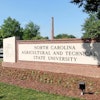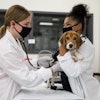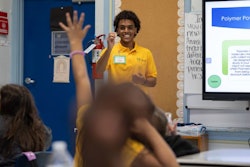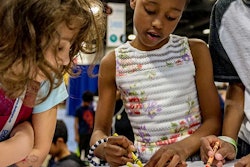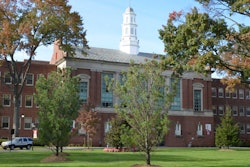WASHINGTON – Despite the increased time and attention being spent on raising standards in education, the nation’s workforce still faces a critical skills shortage—particularly in the STEM fields—largely because youths are spending too much time with technology that deprives them of real-world experience.
However, the situation can be turned around if more investments are made in youth programs that feature certain elements, such as real-world applications, role models, and mentors, and if more time is spent outside as opposed to indoors with computers.
That was the heart of the message that Rick Stephens, personnel chief for aerospace giant Boeing Co., delivered Monday during a forum titled “The Business of Education: Avoiding a Skills Gap” at the Woodrow Wilson International Center for Scholars.
“No question that we need academic standards and that accountability is important,” Stephens said. “But accountability cannot be left to schools alone.”
Rather, he said, a range of groups and individuals, from business leaders to higher education leaders, must work to create an educational environment for students to learn practical skills that will enable them to compete for today’s jobs.
Stephens made his remarks just before he was to attend a closed-door roundtable at the White House with other CEOs to discuss industry-led efforts to transform America’s education system.
At that meeting, Bank of America announced a $50 million, three-year pledge to help support education, including programs that bridge the achievement gap to post-secondary education completion and connect individuals to “workforce success” in high-growth sectors, particularly through community colleges.
“The best affirmative action policy is a good education,” said Jane Harman, president and CEO of the Wilson Center.
Also, America’s Promise Alliance Grad Nation Community Impact Fund announced that it will raise $50 million to support the goal of ending the dropout crisis and preparing young people for college and careers, with the first planning grants being awarded in the fall.
And, somewhat ironically, Microsoft announced a $15 million investment in research and development for immersive learning technologies including game-based instruction—whereas Stephens took great pains during his talk to lament how today’s youth spend too much time in front of computers, playing on game consoles and thumbing hand-held devices instead of playing outside.
“Thumb manipulation is a reactive action,” Stephens said. “It cannot replace imaginative play.”
Stephens nostalgically recounted the world-changing feats of members of what has come to be known as “The Greatest Generation,” who won World War II, building the strongest global economy and landing a man on the Moon. He also recounted the many reports that demonstrate the educational deficits the country has experienced in reading and math proficiency since the 1960s. A recent academic report card found that only 74 percent of high school seniors were at or above the basic level in reading, and only 64 percent were at or above the basic level of math, Stephen said.
“We are no longer a nation at risk,” he said, echoing the findings of the 1983 report titled “A Nation at Risk,” by the National Commission on Excellence in Education. “We are a nation in crisis.”
Stephens said investments must be made in programs that feature five key components that help determine success, particularly in STEM fields.
“Children need real-world experiences,” Stephens said of the first component. “They have to play with and do real things, not just toys, so they can see through experience when something works and when it doesn’t.”
Second, he said, what kids learn in school must relate to them. “If it doesn’t relate, it’s not real, and if it’s not real, it’s not applicable,” he said.
Third, he said, children need role models—“live human beings”—to follow. Fourth, they need mentors to help guide them and reflect on what they’ve learned.
Lastly, he said, youngsters need incentives to excel.
Stephens singled out several examples of programs that he said embodied these five components. Among them were the FIRST (For Inspiration and Recognition of Science and Technology) robotics competition started by inventor and entrepreneur Dean Kamen, the National Academy Foundation, and Geoffrey Canada’s Harlem Children’s Zone.
He said he is a fan of research and evidence but also favored taking a Keplerian approach to funding programs that may not necessarily have the facts and figures to demonstrate effectiveness.
“If we see it and it works, let’s do it,” he said.
In his formal talk, Stephens largely focused on the need to reach young people early to interest them in pursuing STEM careers.
He said that, whereas it used to take Boeing six or seven weeks to train aerospace employees, now it takes as many as 13 weeks—a change that he says is a sign that something is amiss in the nation’s educational system.
Later, in an interview, Stephens touted the benefits of internships, whether paid or unpaid, and prodded colleges and universities to make sure their engineering students get courses specific to engineering instead of general science courses. He said today’s college students must understand that the days of getting a college degree that will enable them to get a job that they will work at for 30 years are gone.
Asked what incentives students have to enter the aerospace industry given massive layoffs at NASA, Stephens said: “You never know how to predict what’s going on in the job market.”
At the same time, he said, Boeing is hiring some of the former engineers at NASA in its commercial airline enterprises.

